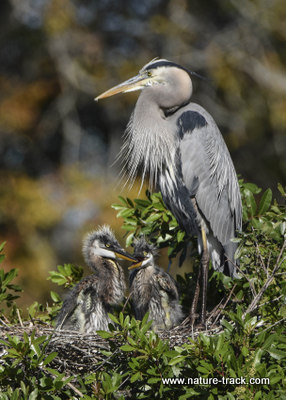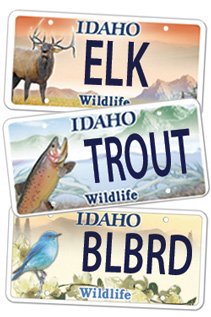Biodiversity

There are thousands of species of vertebrates on Earth, but their numbers are like a bucket of sand on a beach compared to the invertebrates, many of which have yet to be discovered and cataloged.
We recently read a story on the internet about the "deep biosphere—the mysterious patchwork of underground ecosystems that exists between Earth's surface and its core”, and the potential for life there. Scientists estimate that there may be millions of new species down there that are yet to be discovered. Most of these are single-celled organisms and occasionally invertebrates, but they do highlight the incredible biological diversity of this third rock from the sun.
A good working definition of biodiversity comes from The Convention on Biological Diversity: “Biodiversity is the variability among living organisms from all sources. This includes diversity within species, between species and of ecosystems.” This definition accounts for genetics, population robustness, and variety both in the organisms themselves and their habitats or ecosystems.
According to National Geographic Society, “Scientists have identified about 1.75 million different species. That includes 950,000 species of insects, 270,000 species of plants, 19,000 species of fish, 9,000 species of birds, and 4,000 species of mammals.” There are also about 10,700 species of reptiles and about 7,000 different species of amphibians. The remainder are invertebrates and single cell organisms such as bacteria and protozoa. Note that these are just the ones that have been identified.
Particularly in the non-vertebrate class, there are many more discoveries to make, but even then, astounding vertebrate discoveries have been made in recent years. The okapi comes to mind. This mammal, a shy forest-dwelling relative of the giraffe, looks something like a cross between a giraffe and a zebra. It was thought to be a hoax until a population was discovered in 1901.
Sometimes a discovery is simply scientists coming to the realization that what was considered a single species is actually two, as in the case of the African elephant. The smaller forest dwelling African elephant has been recognized as a species distinct from the larger bush elephant.
Even though mammals are well-studied as a group, the pace of discovery seems to be increasing. Since 2000, 25 new species of primates—16 lemurs and nine monkeys—have been discovered and documented. At least one of these came from an area with a strong human population. It was a monkey, about three feet tall, with a thick fur coat and brownish-gray hair fanned out around its black muzzle. Seems like it would be hard to miss but it had been undiscovered by modern (natives knew about it) scientists until about 2007.
Thirty species of new bats have been described worldwide since 2000 along with numerous species of rodents, including one from a family thought extinct since the Miocene, a pygmy three-toed sloth, three species of lagomorphs and five new species of marsupials.
Many species that are being discovered have small limited ranges, often an island or two or something similar. A case in point is the Rote Leaf Warbler, a new bird species discovered in Indonesia in October of 2018. This species has a range of about 1200 square kilometers.
This renaissance of exploration has been called, “the new age of discovery,” and is fueled by a couple of things. First, research technology has never been better. Second, and sadly, deforestation and development are opening otherwise virgin forests at an unprecedented rate, allowing researchers access. The trade-off is that we may destroy some species before we even know they exist.
Protecting this wonderful biodiversity should be job one. The fabric of life on this planet is so intertwined that the unraveling of a few threads here or there can eventually lead to catastrophe.
Wildlife License Plates
Great news! as of 2024, there are three NEW designs for license plates. They still are bluebird, cutthroat trout and elk, but they are beautiful.
Idaho Wildlife license plates provide essential funding that benefits the great diversity of native plants and wildlife that are not hunted, fished or trapped—over 10,000 species or 98% of Idaho’s species diversity. Game species that share the same habitats (such as elk, deer, antelope, sage-grouse, salmon, trout) also benefit from these specialty plates.
No state tax dollars are provided for wildlife diversity, conservation education and recreation programs. Neither are any revenues from the sale of hunting or fishing licenses spent on nongame species. Instead, these species depend on direct donations, federal grants, fundraising initiatives—and the Idaho Wildlife license plates.
Both my vehicles have Bluebird Plates. I prefer the bluebird because the nongame program gets 70 percent of the money from bluebird plates, but only 60 percent of the money from elk and trout plates - 10 percent of the money from elk plates supports wildlife disease monitoring and testing programs (to benefit the livestock industry) and 10 percent from cutthroat plates supports non-motorized boat access.
Incidentally, in 2014, the Idaho Legislature denied the Department of Fish and Game the ability to add new plates or even to change the name of the elk and cutthroat plates (very specific) to wildlife and fish plates, a move that would have allowed for changing images occasionally and generating more revenue. It would seem that they believe that we Idahoans don't want a well funded wildlife program.
I think it is time we let the Legislature know that Idahoan support wildlife funding and that we would like to see these generic plates come to fruition.
Help Idaho Wildlife
When we traveled across the state in October 2017, we visited most of the Idaho Department of Fish and Game wildlife management areas. Most of the vehicles we saw using the wildlife management areas did not have wildlife plates. Buying wildlife plates is a great way for non-hunters and hunters alike to support wildlife-based recreation like birding.
C'mon folks, let's help Idaho's wildlife by proudly buying and displaying a wildlife license plate on each of our vehicles!
See below for information on Idaho plates. Most states have wildlife plates so if you live outside Idaho, check with your state's wildlife department or vehicle licensing division for availability of state wildlife plates where you live.
And tell them that you heard about it from Nature-track.com!

Wildlife License Plates
Great news! as of 2024, there are three NEW designs for license plates. They still are bluebird, cutthroat trout and elk, but they are beautiful.
Idaho Wildlife license plates provide essential funding that benefits the great diversity of native plants and wildlife that are not hunted, fished or trapped—over 10,000 species or 98% of Idaho’s species diversity. Game species that share the same habitats (such as elk, deer, antelope, sage-grouse, salmon, trout) also benefit from these specialty plates.
No state tax dollars are provided for wildlife diversity, conservation education and recreation programs. Neither are any revenues from the sale of hunting or fishing licenses spent on nongame species. Instead, these species depend on direct donations, federal grants, fundraising initiatives—and the Idaho Wildlife license plates.
Both my vehicles have Bluebird Plates. I prefer the bluebird because the nongame program gets 70 percent of the money from bluebird plates, but only 60 percent of the money from elk and trout plates - 10 percent of the money from elk plates supports wildlife disease monitoring and testing programs (to benefit the livestock industry) and 10 percent from cutthroat plates supports non-motorized boat access.
Incidentally, in 2014, the Idaho Legislature denied the Department of Fish and Game the ability to add new plates or even to change the name of the elk and cutthroat plates (very specific) to wildlife and fish plates, a move that would have allowed for changing images occasionally and generating more revenue. It would seem that they believe that we Idahoans don't want a well funded wildlife program.
I think it is time we let the Legislature know that Idahoan support wildlife funding and that we would like to see these generic plates come to fruition.

"WOW. What a phenomenal piece you wrote. You are amazing." Jennifer Jackson
That is embarrassing, but actually a fairly typical response to my nature essays. Since The Best of Nature is created from the very best of 16 years of these nature essays published weekly in the Idaho Falls Post Register (online readership 70,000), it is a fine read. It covers a wide variety of topics including humorous glimpses of nature, philosophy, natural history, and conservation. Readers praise the style, breadth of subject matter and my ability to communicate complex and emotional topics in a relaxed and understandable manner.
Everyone can find something to love in this book. From teenagers to octogenarians, from the coffee shop to the school room, these nature essays are widely read and enjoyed.
Some of the essays here are my personal favorites, others seemed to strike a chord with readers. Most have an important message or lesson that will resonate with you. They are written with a goal to simultaneously entertain and educate about the wonderful workings of nature. Some will make you laugh out loud and others will bring a tear to the eye and warm your heart.
Readers Write:
"You hit a home run with your article on, Big Questions in Nature. It should be required reading for everyone who has lost touch with nature...great job!" Joe Chapman
"We enjoyed your column, Bloom Where Planted. Some of the best writing yet. The Post Register is fortunate to have your weekly columns." Lou Griffin.
To read more and to order a copy, click here or get the Kindle version
Copies are also available at:
Post Register
Island Park Builders Supply (upstairs)
Barnes and Noble in Idaho Falls
Harriman State Park, Island Park
Museum of Idaho
Valley Books, Jackson Wyoming
Avocet Corner Bookstore, Bear River National Wildlife Refuge, Brigham City, Utah
Craters of the Moon National Monument Bookstore, Arco, Idaho